Researches
Unprecedented Polymers by New Synthetic Methods
Our research group has focused on the development of new polymerization methods and polymer materials based on organic/organometallic chemistry.
For example, living coordination polymerization of allene derivatives, main chain-type reactive polymers including metallacycle structures, and multi-component polycondensation catalyzed by transition metals, and their applications.
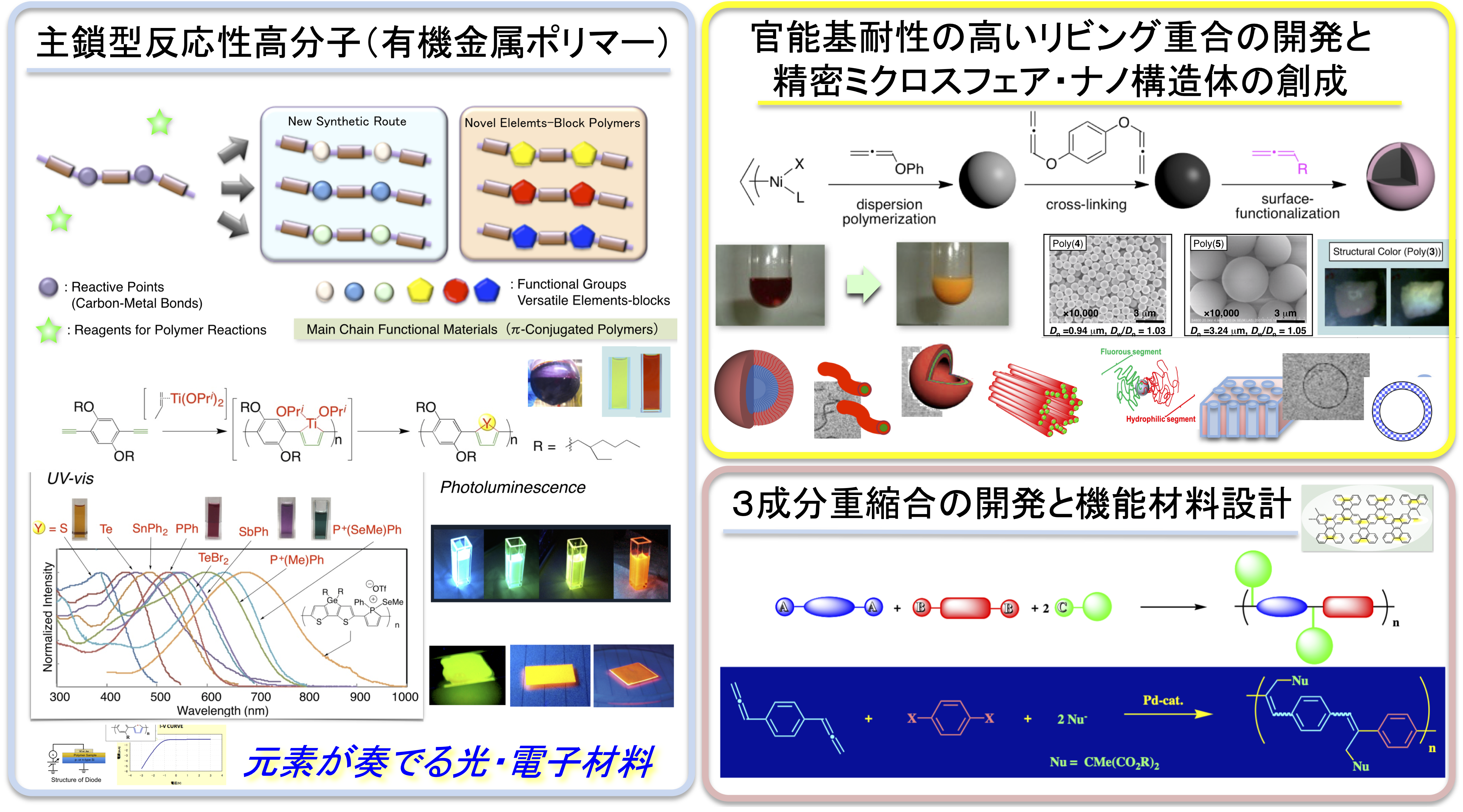
Keywords
Polymer synthesis, Organic synthesis, Organometallic chemistry, Organometallic polymer, Reactive polymer, Polymer reaction, Functional polymer, π-Conjugated polymer, Living polymerization, Microsphere, Nanosphere, Polycondensation, Catalytic reaction
Living Coordination Polymerization of Allene Derivatives and Their Application as Precision Reactive Polymers
Our group has been focusing on the development of new polymerization methods applicable to highly unsaturated monomers — allene and butadiene derivatives — and their applications.
Coordination Polymerization Behavior of Allenes
We have successfully developed the coordination polymerization of allene derivatives catalyzed by allyl nickel complex and studied their detailed behaviors:
- This polymerization proceeds by a living polymerization mechanism and affords polymers with narrow dispersity.
- Due to the broad functional group tolerance, this method can be utilized as a general polymerization method for allenes with various substituents.
- Microstructures of the obtained polymers can be precisely controlled in a broad range (x:y = 90:10 – 0:100) and new reactive polymers with well-defined structures can be obtained.
- Since the allyl nickel catalyst can also polymerize butadiene and isocyanide derivatives, copolymers of allenes and such monomers can be synthesized.
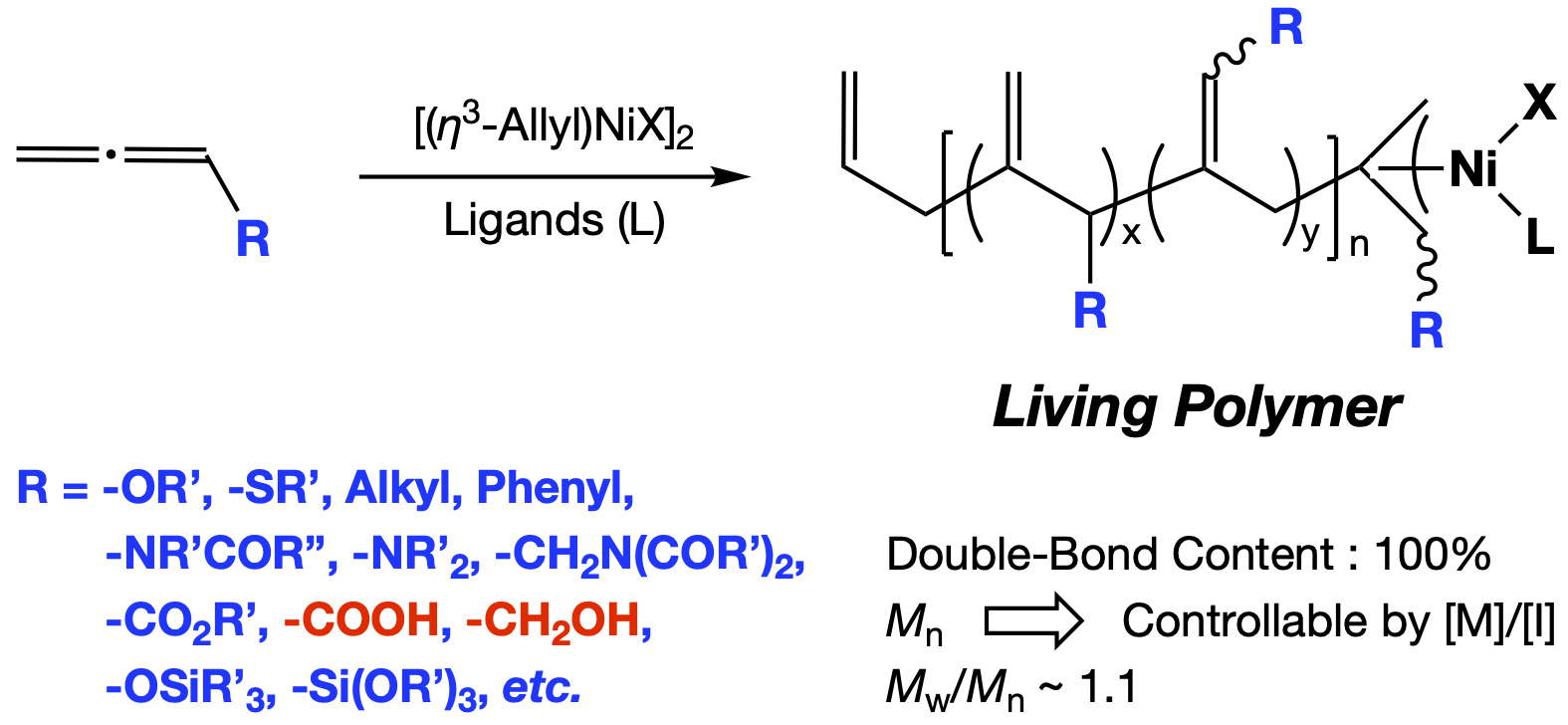
Construction of Precision Structure of Polymer
Synthesis of functional materials from allene derivatives with various functional groups
By taking advantage of the polymerizability of allene derivatives with various functional groups in a living mechanism,
various precision polymeric materials have been developed.
For example, block copolymers containing allenes with triethoxysilane groups have been synthesized and applied to surface modification of inorganic materials.
Using such materials, the application on the construction of new reaction fields for solid-phase organic synthesis is in progress.

Synthesis of helical polymers
From allene monomers with chiral substituents, we successfully obtained the polymers with one-handed helical main chain structures.
These polymers are expected to exhibit various unique properties derived from the helical chirality
and can be used as chiral stationary phase and chiral reaction media.

Precise construction of functional microspheres/nanospheres
Since this polymerization can be proceeded by a living mechanism in heterogeneous as well as homogeneous conditions,
polymeric nanoparticles with narrow diameter dispersion can be obtained.
New functional materials are expected to be produced by taking advantage of the living nature of this polymerization method.

Synthesis of Main-chain-type Reactive Polymer with Metallacycle Structure and Its Application
Focusing on transition metal-carbon bonds that show various reactivity, we have been working on synthesizing a new organometallic polymer with a metallacycle structure in the main chain and applied it as a new main-chain-type reactive polymer. By utilizing the reactions of these organometallic polymers with various molecular reagents, we have been developing a new method to synthesize functional materials with main chain skeletons, which are difficult to be synthesized by common methods.
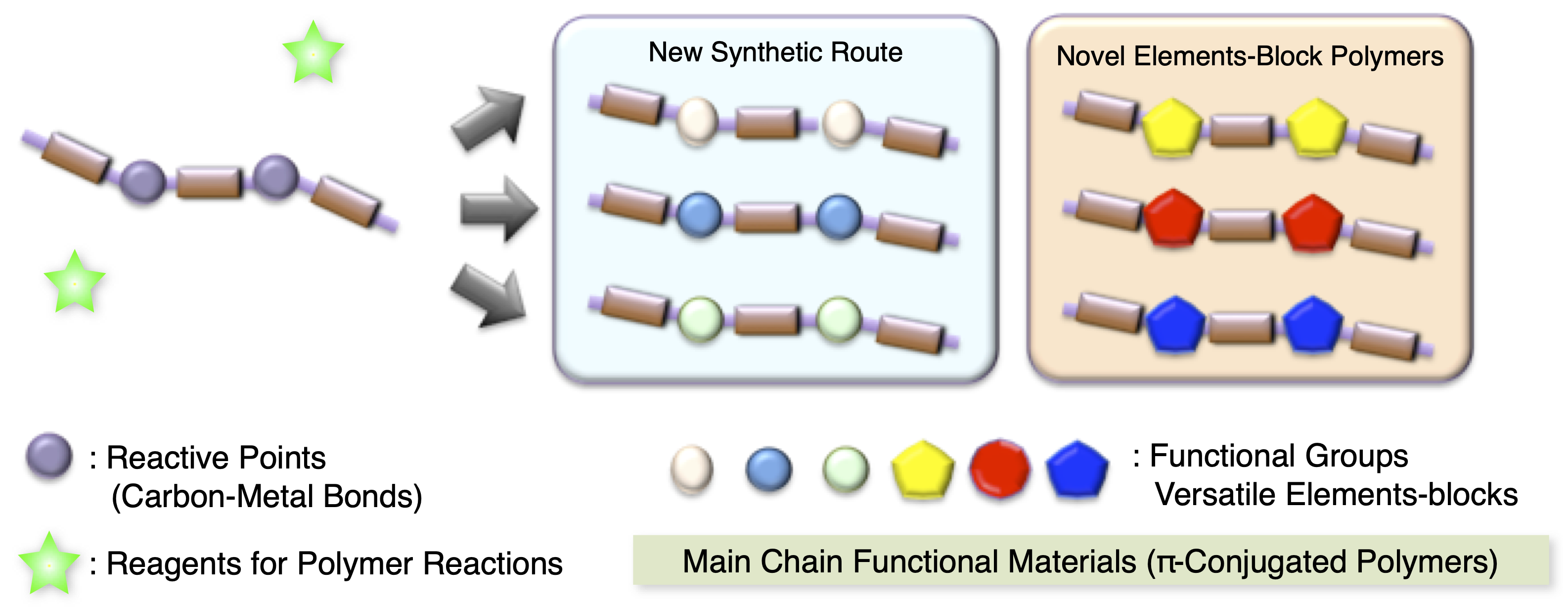
For example, polymerization of titanium complexes with aromatic diynes can synthesize organotitanium polymers containing a titanacyclopentadiene skeleton with 2,5-position-regulated main chain bonding, and polymer reactions of these polymers with various electrophilic reagents can produce π-conjugated polymers with various heterole structures (containing tin, phosphorus, arsenic, antimony, bismuth, sulfur, selenium, tellurium, etc.) directly attached to the π-electron system.
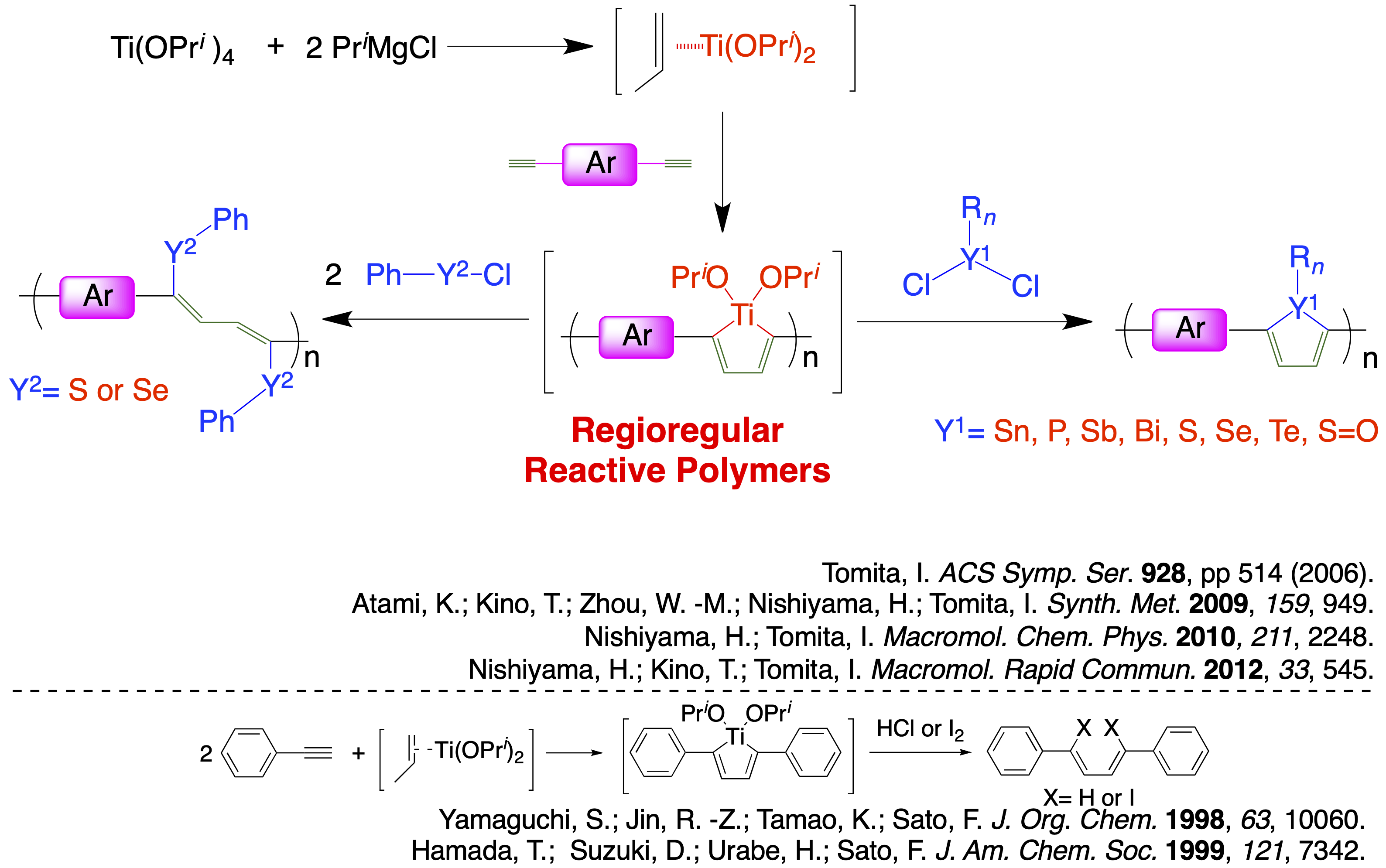
π-conjugated polymers obtained by polymeric reactions of organotitanium polymers exhibit completely different properties depending on the (hetero)elements.
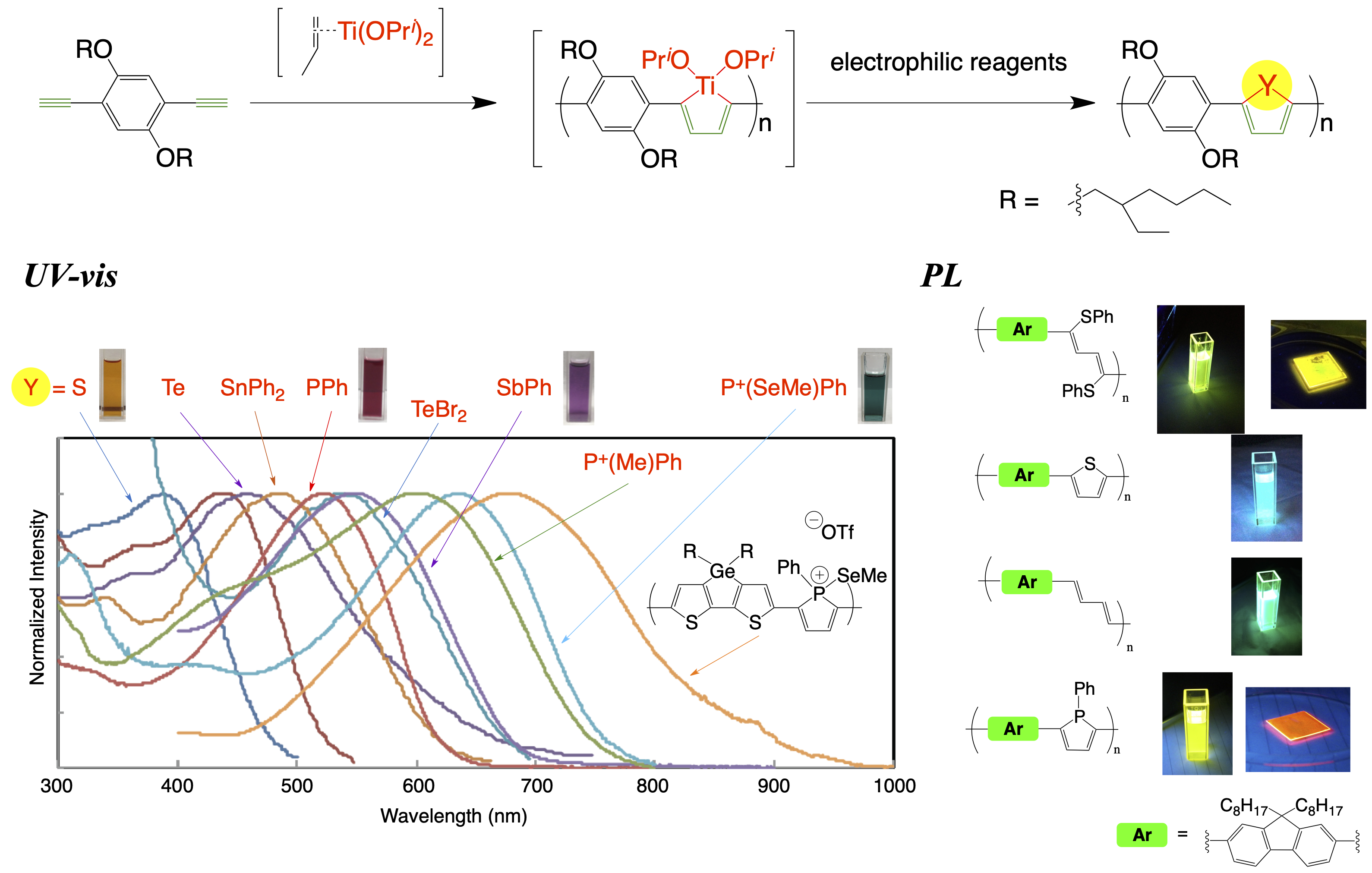
By chemical modification of a heteroelement in a π-conjugated polymer with another element to construct an "element block"s, more interesting optical and electronic properties which could not be achieved with a single element have been realized.
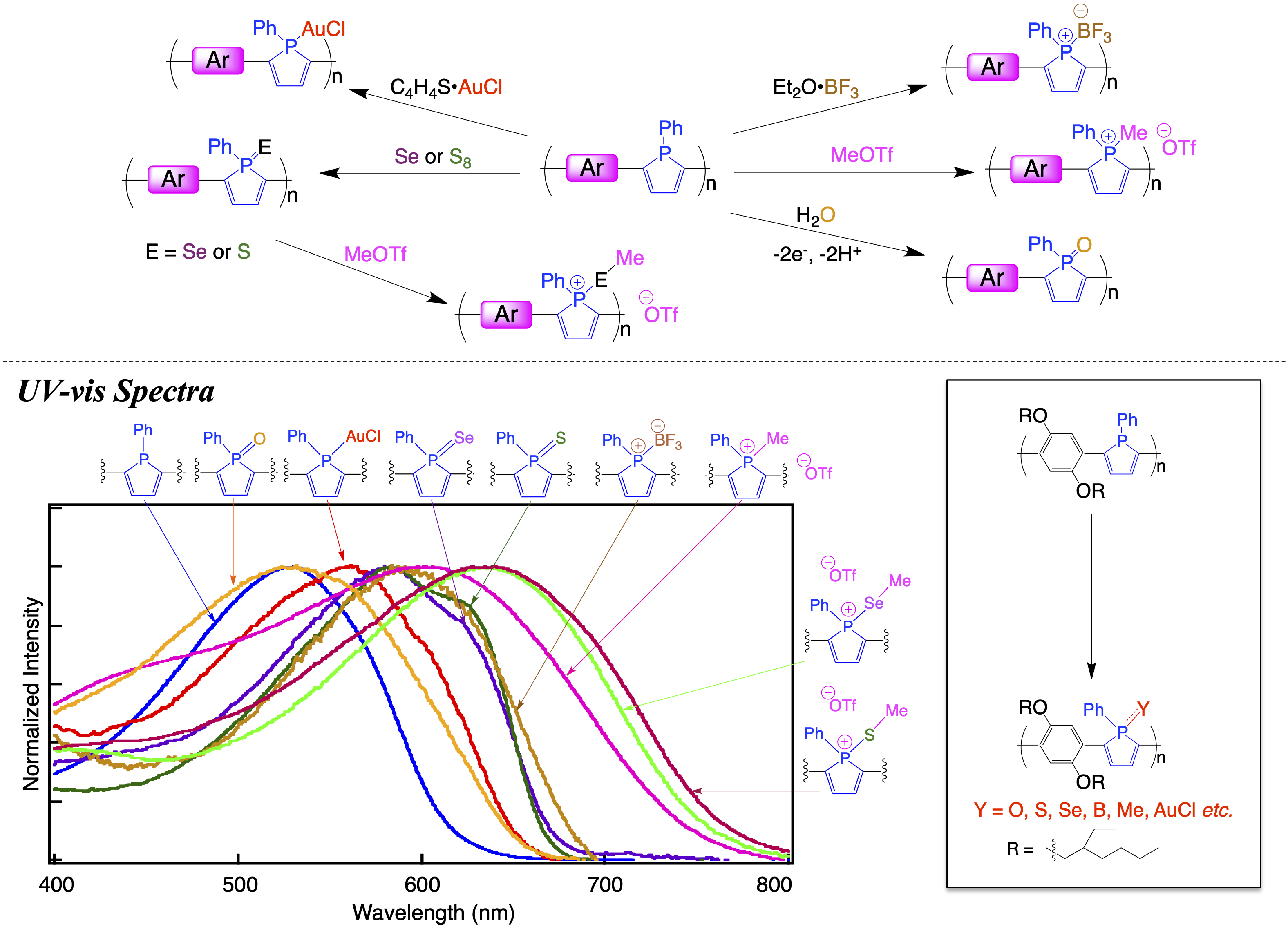
Development of New Multi-component Polycondensation and Its Application to Functional Materials
We are currently conducting research on the development of various multi-component polycondensation methods using reactions such as transition metal-catalyzed three-component coupling reactions. Since these reactions couple three or more components with a regulated monomer sequence in a single step, various polymer skeletons with sophisticated primary structures and regulated monomer sequences can be easily synthesized from simple monomers. Furthermore, the development of functional materials based on these polymerization reactions is in progress.

Synthesis of π-Conjugated Polymers via Precursors
π-Conjugated polymers are expected to be applied to various fields such as conductive materials, polymer batteries, transistors,
organic light-emitting diode, and nonlinear optical materials.
However, they often have rigid backbones which limit their solubility in organic solvents and processabilities.
Therefore, polymer precursors which are soluble in organic solvents, processable, and moldable are considered to be promising alternates
to construct the desired π-conjugated materials by post-treatments like heating.
In multi-component polycondensation reactions, polymer precursors can be easily synthesized from simple monomers.

Synthesis of Poly(arylene-vinylene) Derivatives
We have pioneered three-component polycondensation of aromatic bis-allenes, aromatic dihalides, and nucleophiles with various structures,
and are developing a one-step synthetic method of poly(arylene-vinylene) grafted with polymer chains and functional moieties
on the side chains using this method.
For example, we have investigated polymerization using nucleophiles with polyoxyethylene chains or optically active groups
to induce ionic conductivity or one-handed helical structures in the main chains, respectively,
and found that polymers with these functional moieties in the side chains can be easily synthesized.

Synthesis of Functional Polymers with Diverse Main Chain Skeletons
In recent years, many transition metal-catalyzed multi-component coupling reactions have been reported (including our original ones), and we are using them as new synthetic methods to construct various functional polymers.